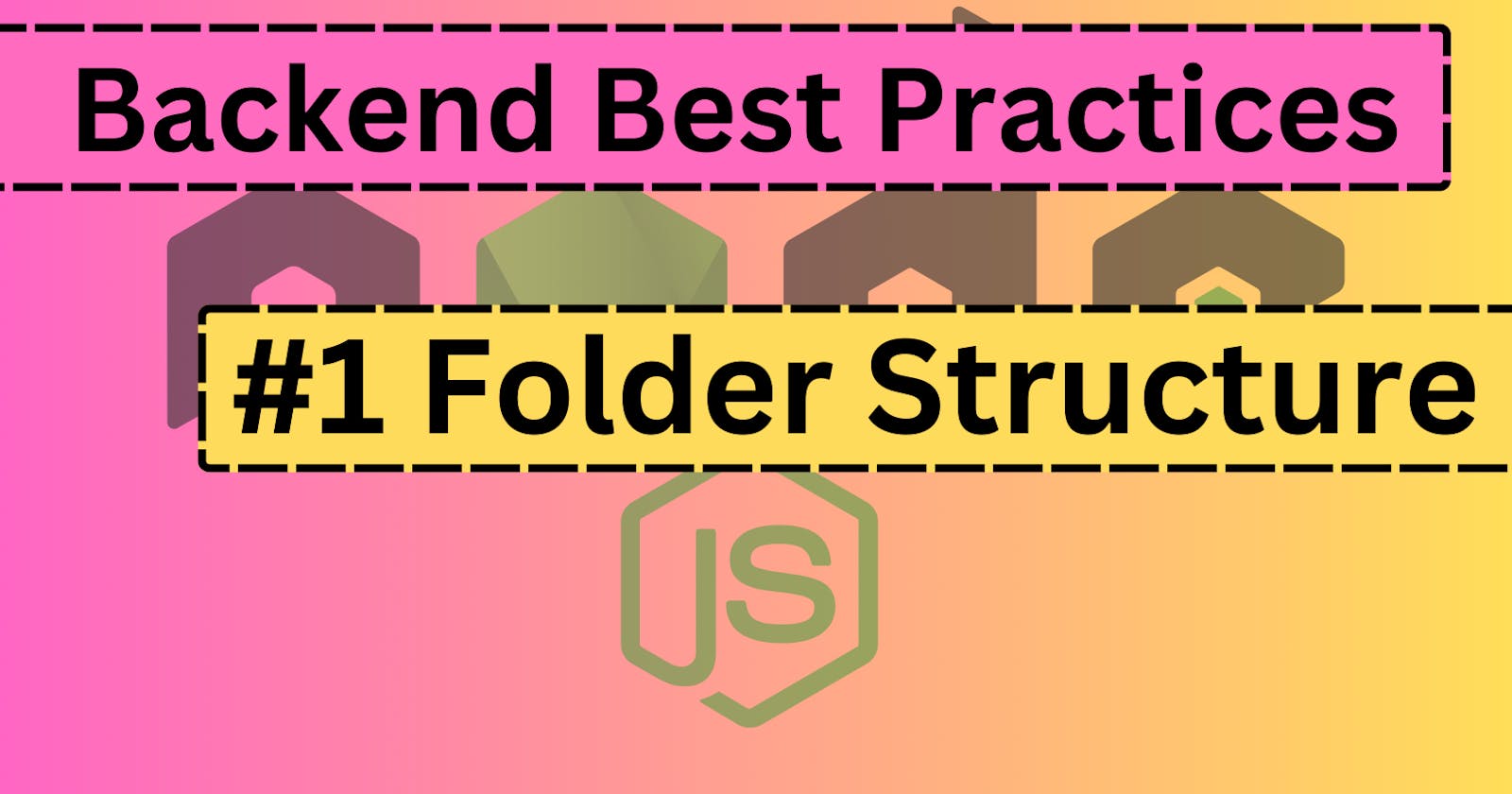#1 Best Practices: Nodejs Backend Folder Structure
A Blueprint for Order: Crafting an Efficient Node.js Backend Folder Structure for Seamless Development and Maintenance
When it comes to building robust and maintainable Node.js backend applications, the significance of a well-thought-out folder structure cannot be overstated. An organized project layout not only enhances code readability but also streamlines collaboration and future scalability. In this blog post, we'll delve into the best practices for structuring your Node.js backend project to ensure a clean, efficient, and easily navigable codebase.
1. Project Initialization
1.1 Setting Up the Foundations
Before diving into the intricacies of project structuring, let's lay the groundwork. Begin by initializing your Node.js project and installing the essential dependencies:
npm init -y
npm install express mysql2
git init
These commands not only create the foundation for your project but also ensure you have the necessary tools for building a robust Node.js application.
Best-Practice-Project/
├── node_modules/
├── package.json
└── package-lock.json
1.2 Root Level Structure
At the root level, keep essential configuration files like package.json, README.md, .envand .gitignore. These files provide project metadata, documentation, and version control information.
.env for environment variables
.gitignore for git to un-track files and folders
README.md for details about the project
Best-Practice-Project/
├── node_modules/
├── src/
├── .env
├── .gitignore
├── README.md
├── package.json
└── package-lock.json
2. Structuring the src Directory
2.1 app.js or Entry Point
The main entry point of your application, typically app.js or index.js, should be located in the src directory.
/Best-Practice-Project/src
|-- app.js
|-- ...
2.2 Controllers
Separate concerns by placing controllers in a controllers directory. Each controller should handle a specific aspect of your application's business logic.
/Best-Practice-Project/src
|-- controllers
| |-- user.controller.js
| |-- auth.controller.js
| |-- ...
|-- ...
2.3 Models
Store database models in a models directory. If you're using an ORM like Sequelize, place model definitions here.
/Best-Practice-Project/src
|-- models
| |-- index.js
| |-- User.js
| |-- Post.js
| |-- ...
|-- ...
2.4 Routes
Keep route definitions in a routes directory. Organize routes based on features or entities they represent.
/my-nodejs-app/src
|-- routes
| |-- index.js
| |-- user.routes.js
| |-- auth.routes.js
| |-- ...
|-- ...
2.5 Services
For reusable business logic or external service integrations like Stripe for payment or AWS s3 for object storage, create a services directory.
/Best-Practice-Project/src
|-- services
| |-- email.service.js
| |-- payment.service.js
| |-- ...
|-- ...
3. Organizing Middleware and Utilities
3.1 Middlewares
Place middleware functions in a middlewares directory. These functions can include logging, authentication, error handling, etc.
/Best-Practice-Project/src
|-- middlewares
| |-- logging.middleware.js
| |-- auth.middleware.js
| |-- ...
|-- ...
3.2 Utilities
For utility functions that don't fit into other categories, use a utils directory
/Best-Practice-Project/src
|-- utils
| |-- helperFunctions.js
| |-- constants.js
| |-- ...
|-- ...
4. Handling Configurations
4.1 Configuration Files
Keep configuration files in a config directory. This includes environment-specific configurations for databases, third-party services, and settings.
/Best-Practice-Project/src
|-- config
| |-- database.config.js
| |-- server.config.js
| |-- ...
|-- ...
5. Testing and Documentation
5.1 Tests
Separate test files from source code. Place them in a tests or __tests__ directory.
/Best-Practice-Project/src
|-- __tests__
| |-- userController.test.js
| |-- ...
|-- ...
6. Final Folder Structure
Best-Practice-Project/
├── node_modules/
├── src/
│ ├── config/
│ │ ├── database.config.js
│ │ └── server.config.js
│ ├── controllers/
│ │ ├── user.controllers.js
│ │ └── auth.controllers.js
│ ├── middlewares/
│ │ ├── logging.middleware.js
│ │ └── auth.middleware.js
│ ├── models/
│ │ ├── User.js
│ │ ├── Post.js
│ │ └── index.js
│ ├── routes/
│ │ ├── user.routes.js
│ │ ├── auth.routes.js
│ │ └── index.js
│ ├── services/
│ │ ├── email.services.js
│ │ └── storage.services.js
│ ├── tests/
│ │ └── userController.test.js
│ ├── utils/
│ │ ├── helperFunctions.js
│ │ └── constants.js
│ └── app.js
├── .env
├── .gitignore
├── README.md
├── package.json
└── package-lock.json
Conclusion: A Blueprint for Success
Organizing your Node.js backend project is not just about adhering to a convention; it's about establishing a foundation for success. A well-structured project improves collaboration, scalability, and maintainability. By following these best practices, you pave the way for a streamlined development process and set the stage for a successful backend application.
Remember, these are guidelines, and you can adjust the structure based on your project's specific needs. The key is to maintain consistency and clarity throughout your codebase.
In the next blogs of this series, we'll embark on a journey of exploration, dissecting each element of the project structure. Stay tuned for detailed insights into code-level best practices, integration strategies, and an immersive dive into the intricacies of building a robust Node.js backend.
Happy coding, and let's unravel the mysteries together 😎
